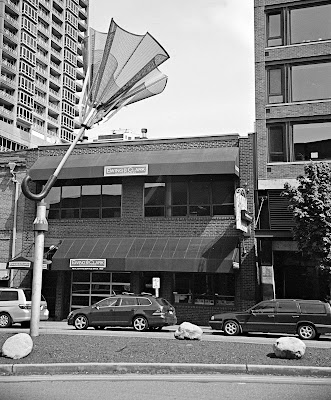Jim’s comments:
My main interest in Hypercat is it’s sharpness. But I also want the fine grain of a Pyro developer. Hypercat has delivered both for me.
I originally tried for high sharpness using a 1:10:300 dilution of Hypercat, agitating every 3 minutes. While the sharpness was extremely good, I found that I was losing highlight detail and the negatives were coming out with too much contrast. Jay suggested I try reducing the solution B concentration to a 1:5:300 dilution and extending the development time. This has produced excellent results. The negatives are sharp with very good tones. There is nice highlight and shadow detail.
The recommended high sharpness/acutance starting point is to use a 1:5:300 dilution of Hypercat with a development time that is 1.25x 510-Pyro’s development time. Use continuous inversions for the first 30 seconds and then 10 second agitations every 3 minutes.
I really like this developer. It has a nice crispness while still maintaining a small grain size.
Here is an example with Tri-X 400:

Film: Tri-X 400
EI: 400
Format: 35mm
Developer: Hypercat
Dilution: 1:5:300
Time: 9 min
Temp: 21C/70F
Agitation: Continuous inversions for the first 30 seconds and then 10 seconds agitation every 3 minutes Presoak: 3 minute water presoak
Fixer: TF-4
Here is a Fomapan 200 example:
Film: Fomapan 200
EI: 200
Format: 35mm
Camera/Lens – Fed2/Jupiter-12
Developer: Hypercat
Dilution: 1:5:300
Time: 7.5 min
Temp: 21C/70F
Agitation: Continuous inversions for the first 30 seconds and then 10 seconds agitation every 3 minutes Presoak: 3 minute water presoak
Fixer: TF-4

4 comments:
I really appreciate the information given freely by Jay and Jim. As an amateur photographer, albeit a serious one, I lack the 'technical' background for compiling developers. That is why this site is invaluable to people like me. I have a 'curious' mind. I want to know why, or how something works. It is only because generous people freely give the information that explains how to do it that allows me to get better at this very interesting process.
Thank you both.
Dennis
I really appreciate the information given freely by Jay and Jim. As an amateur photographer, albeit a serious one, I lack the 'technical' background for compiling developers. That is why this site is invaluable to people like me. I have a 'curious' mind. I want to know why, or how something works. It is only because generous people freely give the information that explains how to do it that allows me to get better at this very interesting process.
Jim. I really like the contrast and gradation on that Foma 200 film.
Thank you both.
Dennis
Thank you, Dennis, for your generous compliment. I value and truly appreciate your feedback and encouragement, as I do Jim's impressive contributions. Thank you both!
Hi Dennis,
I have certainly benefited from information and tips others have supplied and I am happy to be able to give back. I am very glad you found the information useful.
Post a Comment